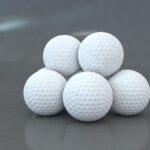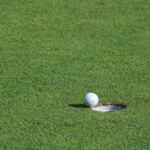
Golf balls are an essential part of the game of golf. They come in various types, sizes, and designs, but one of the most interesting aspects of golf balls is the presence of dimples on their surface. Dimples are the small indentations that cover the outer shell of a golf ball, and they play a significant role in the ball’s aerodynamics and performance. In this article, we will explore the intriguing world of golf ball dimples, including how many dimples golf balls really have and whether it matters.
The Science of Dimples
Before delving into the specifics of golf ball dimples, it’s essential to understand the science behind them. When a golf ball is struck, it experiences two main aerodynamic forces – lift and drag. Lift is the force that allows the ball to stay in the air for an extended period, while drag is the resistance that slows the ball down as it travels through the air. Dimples on a golf ball’s surface alter the airflow around the ball, thereby reducing drag and increasing lift, which allows the ball to travel farther and more accurately.
How Many Dimples Do Golf Balls Have?
The number of dimples on a golf ball can vary depending on the manufacturer and the specific model of the ball. However, the typical number of dimples on a golf ball ranges from 300 to 500. As of today, the most common number of dimples on a golf ball is 336, although some balls may have fewer or more dimples based on their design and intended performance characteristics.
Does It Matter?
The number of dimples on a golf ball does matter to some extent, as it can influence the ball’s flight characteristics and overall performance. A golf ball with fewer dimples tends to travel at a lower trajectory and experience less drag, making it suitable for players who want maximum distance. On the other hand, golf balls with a higher number of dimples can create more spin and have a higher launch angle, which may benefit players seeking better control and stopping power on the greens.
The Evolution of Dimple Patterns
Over the years, golf ball manufacturers have continually researched and experimented with different dimple patterns to enhance the performance of their products. From shallow to deep, large to small, and even seamless dimple designs, there has been a wide variety of dimple patterns introduced to the market. Each design aims to optimize the ball’s aerodynamics and flight characteristics, and golfers can choose a ball with a dimple pattern that best suits their playing style and preferences.
Conclusion
The presence and number of dimples on a golf ball are crucial factors that significantly impact its aerodynamics and performance. While the specific number of dimples may not be a decisive factor for recreational golfers, serious players and professionals understand the importance of dimple design in achieving optimal ball flight and control. As technology and research continue to advance, we can expect further innovations in dimple patterns and their influence on golf ball performance in the future.


 Previous Post
Previous Post Next Post
Next Post